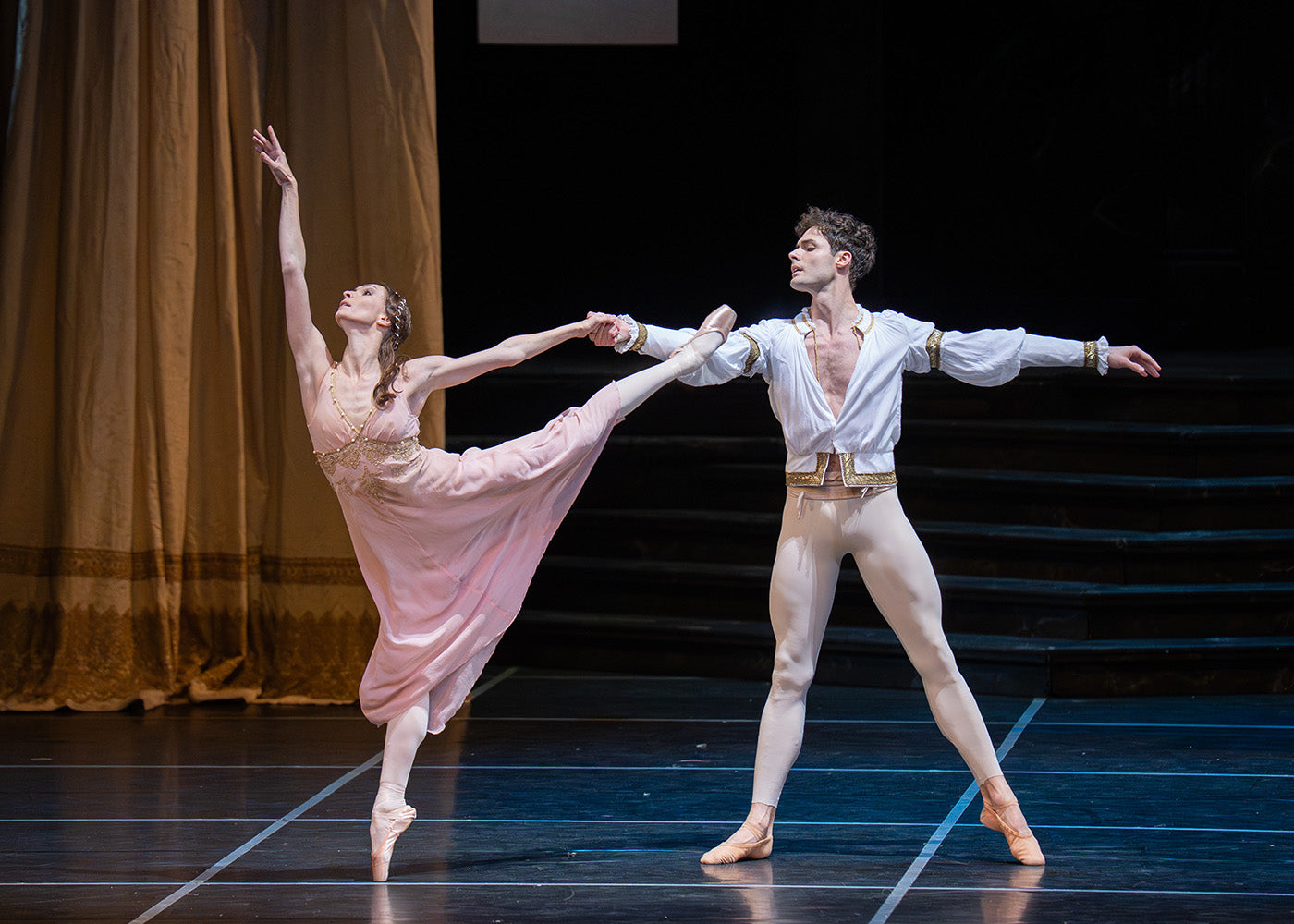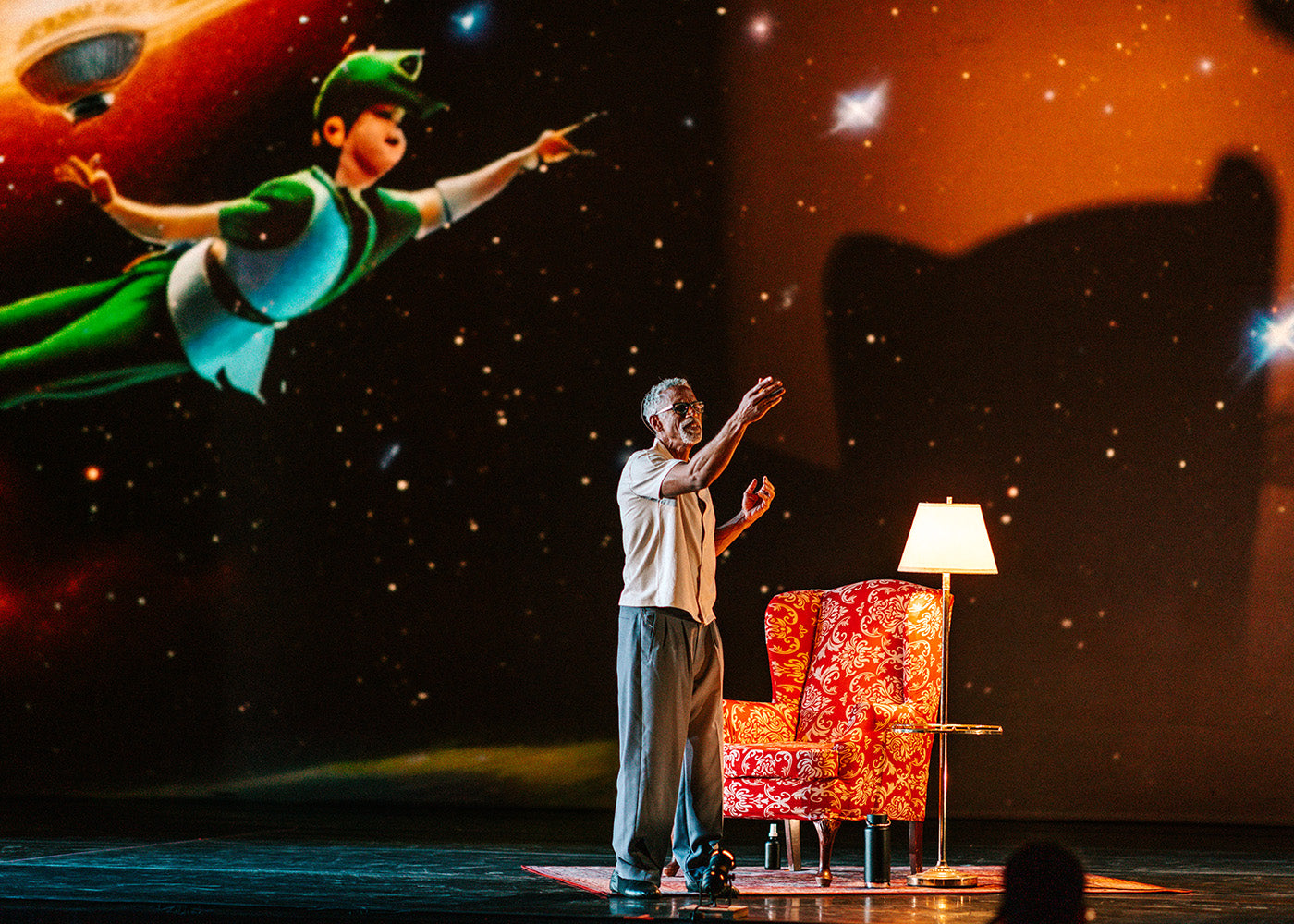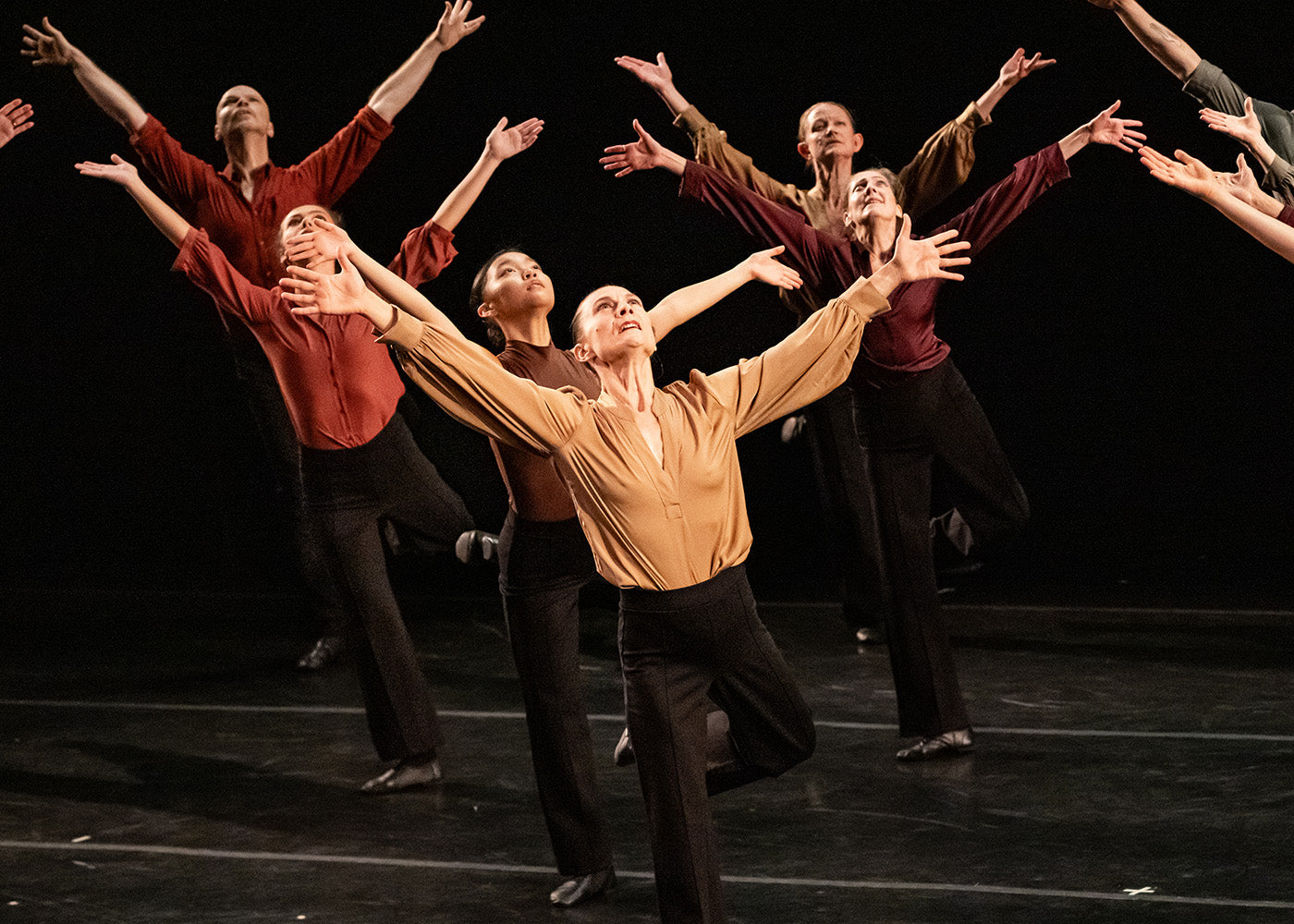Kaliandruk dances the leading role, the forest maiden Marvka, a first name not too distant from her own. She tells me she has a great affinity with the role. “What I feel while dancing this ballet is love, passion for life,” she begins. “It’s emblematic of Ukrainian culture,” she says of the pas de deux between her and Daniil Kish, who plays Maryka’s lover, Lukash, a young carpenter and flautist.
There are moments of sublimity in the ballet, such as when Kish lifts her weightless, spritely frame towards the soft glowing stage lights, her gossamer, flower-strewn dress eddying around them, their eyes locked amorously. The backdrop is radiantly painted wheatfields during the golden hour, an allegorical Ukrainian pastoral landscape alluding to the golden, pre-conflict years, to which the dancers likely yearn to return.
This setting is reminiscent of Kaliandruk’s childhood in Ivano-Frankivsk, a small city in western Ukraine at the foothills of the Carpathian mountains. Growing up, she spent many holidays and weekends walking in the lush alpine countryside and swimming in the lakes and rivers. In stark contrast to her picturesque upbringing is the worrisome news she regularly receives on WhatsApp from her family, still in Ukraine. “Only today I heard they were bombing our city,” she tells me, and we pause at the gravity. I hardly know what to ask her next. “I send pictures to my family every day, in rehearsal and performance,” she says. “They tell me they are proud of me. I am so lucky to be able to perform.” There is a rosy sheen to her visage that warms the heart, both in interview and performance.
With its phantasmagorical forest sprites and enchanted trees, “The Forest Song” seems to Kaliandruk “like a very special part of Ukrainian culture, with magic and power woven through.” Marvka stops Lukash from axing a birch tree to build his new house, sensing spirits in the forest, and she refuses to reap wheat when she has visions of the plants as forest nymphs, dancing and alive. What ensues is the painful choice between abandoning marriage for oneness with nature or abandoning her calling as forest nymph for a mortal love. Both lovers eventually morph magically into the forest blissfully and together. They reject the agrarian life, against the forceful wishes of their parents and village. The ballet ventures beyond bucolic nostalgia. It explores the powerful theme of light conquering darkness.
“I love this about ballet,” Kaliandruk ponders. “I can dance different roles: a princess, a nymph, a fairy. It allows me to dream, however sad the backdrop of our struggle in Ukraine. It permits me to dream.” It is perhaps this recourse to dreaming, of a brighter future and immersion in a world of grace and harmony, that serves as boundless inspiration in dark times.









comments